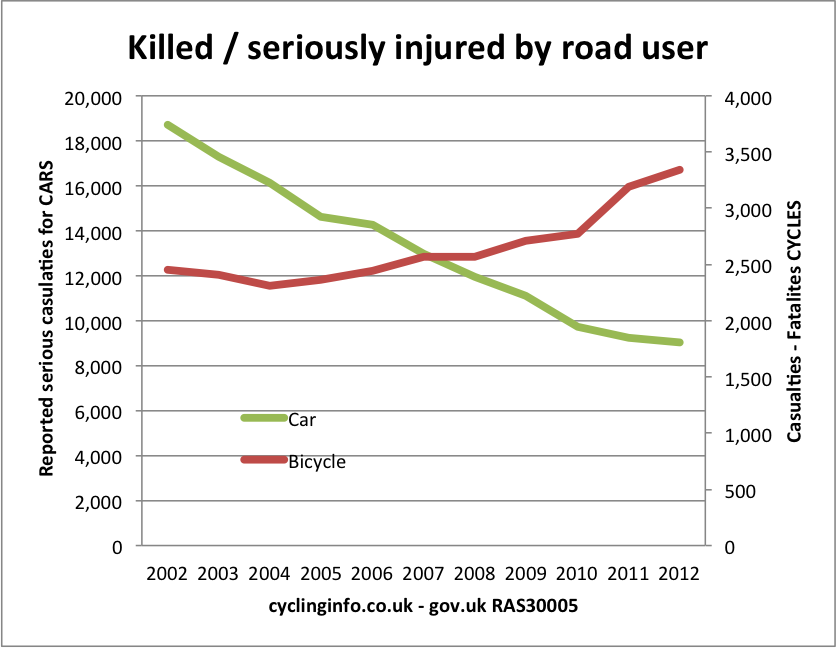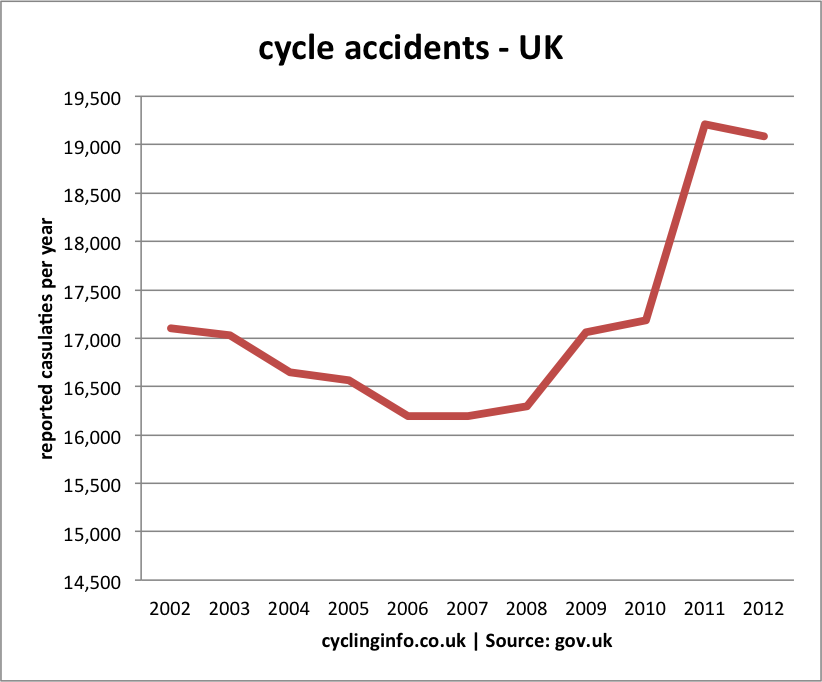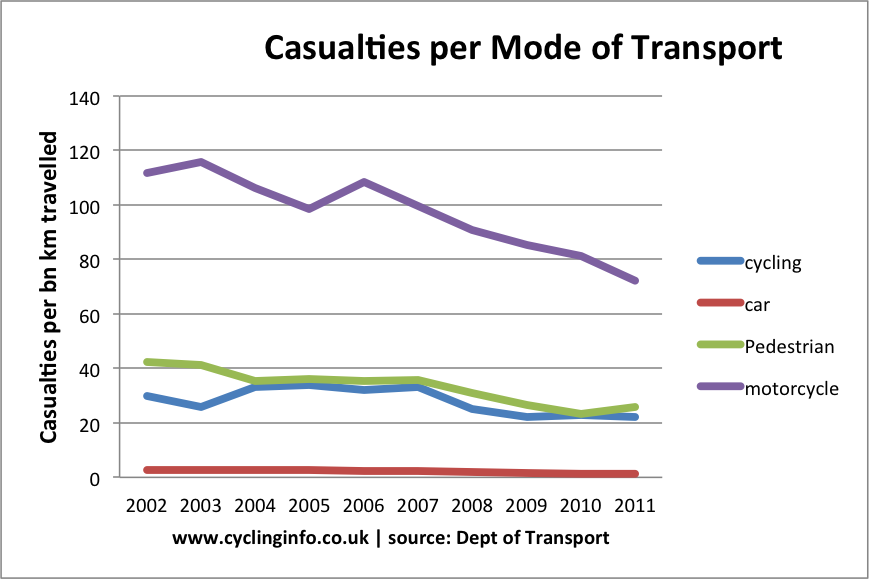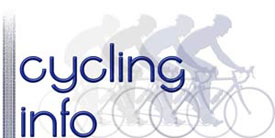I find it a bit harder to write about this kind of topic. Part of me is a very keen cycling advocate. Despite the dangers of cycling – I feel the health benefits far outweigh the alternative of a sedentary lifestyle. In life, everything has a risk, including sitting on a sofa and stuffing yourself with crisps. But, the increase in deaths for cyclists is a salutary reminder that there is unfortunately a danger, and sadly many of these deaths are avoidable without too much effort or restriction of freedom.
The past decade has seen a clear divergence between the rate of accidents for cycle users vs other types of users. Overall, road fatalities and casualties are falling, but cycle users are seeing the opposite trend.
Firstly, the number of cycle fatalities increased to 118 in 2012, a 10% increase on 2011 – the highest level since 2007.
Whilst car users have seen a significant fall in casualties and fatalities, cycle users have seen an increase.

Source: Gov.uk
- Between 2002 and 2012, the number of fatalities and serious injuries for cyclists has increased from 2,450 to 3,340 - a 36% increase
- By contrast for car occupants fatalities and serious injuries has fallen from 18,728 to 9,033 – roughly a 50% fall
- Pedestrians casualties has fallen in this decade from 8,631 to 5,979.
- Source: Reported killed or seriously injured casualties, by road user type, Great Britain, 2002 – 2012. Table RAS30005
The only positive aspect to these statistics is that the increase in accidents and fatalities can be partly attributed to rising cycle use. But, I believe the increase in casualties is greater than the increase in cycle use. According to times casualties are rising five times faster than cycle use (link)
You could attribute falling car fatalities to improved construction of cars, But, this wouldn’t explain why pedestrians have seen a fall in casualties whilst cyclists haven’t
To put it into context, we have endured years of crazy regulations at airports to minimise risk of terrorist attacks. But, since 2001, over 1,000 cyclists have been killed on the roads. If you really wanted to reduce unnecessary deaths, there are quite a few things society could choose to make roads safer and more pleasant.
All Cycle accidents

In context, the relative dangers of cycling vs other modes of transport per km

Note, these statistics reflect casualties per km travelled. If you used casualties per individual journey – it would look quite different and cycling would appear more dangerous.
International Comparisons

Unfortunately, international comparisons only show overall road fatalities, it would be interesting to see statistics specifically for cycle use.
Reasons for Fatalities and accidents
A report by Transport for London found fatal and serious collisions involving cyclists in 2011 showed that 56% were caused by the motorist driving in an ‘unlawful or anti-social’ manner, compared to only 6% caused by cyclists doing the same. (link)
Failed to look properly? was attributed to the car driver in 57% of serious collisions and to the cyclist in 43% of serious collisions at junctions
Risky cycling behaviour? A Department for Transport, found that in 2% of cases where cyclists were seriously injured in collisions with other road users police said that the rider disobeying a stop sign or traffic light was a likely contributing factor. Wearing dark clothing at night was seen as a potential cause in about 2.5% of cases, and failure to use lights was mentioned 2% of the time. (Guardian)
With adult cyclists, police found the driver solely responsible in about 60%-75% of all cases, and riders solely at fault 17%-25% of the time.. But, in the case of children, the police found that it was mostly the young cyclists to blame for failure to take care.
Chris Peck, (CTC cycling organisation) noted: “Government must invest more in cycling infrastructure, implement lower speed limits and increase traffic law enforcement: the number of road traffic police has fallen by 29 per cent in ten years.”
How to reduce fatalities?
- Effective speed limit reductions in urban and rural environments
- More proactive road policing – fining (taking away license) for irresponsible behaviour. Not just waiting for accidents to happen.
- Cycle infrastructure designed to keep cyclists safe.
- Cycle safety awareness part of driving test
- Better cycle safety training for children
- Safety in numbers? The hope is that higher numbers of cyclists contribute to greater overall safety. Though these statistics suggest that increasing numbers is not sufficient to make cycling safer.

Could it perhaps be the increase in poorly designed cycle facilities and the effect this has on cyclists behavior?